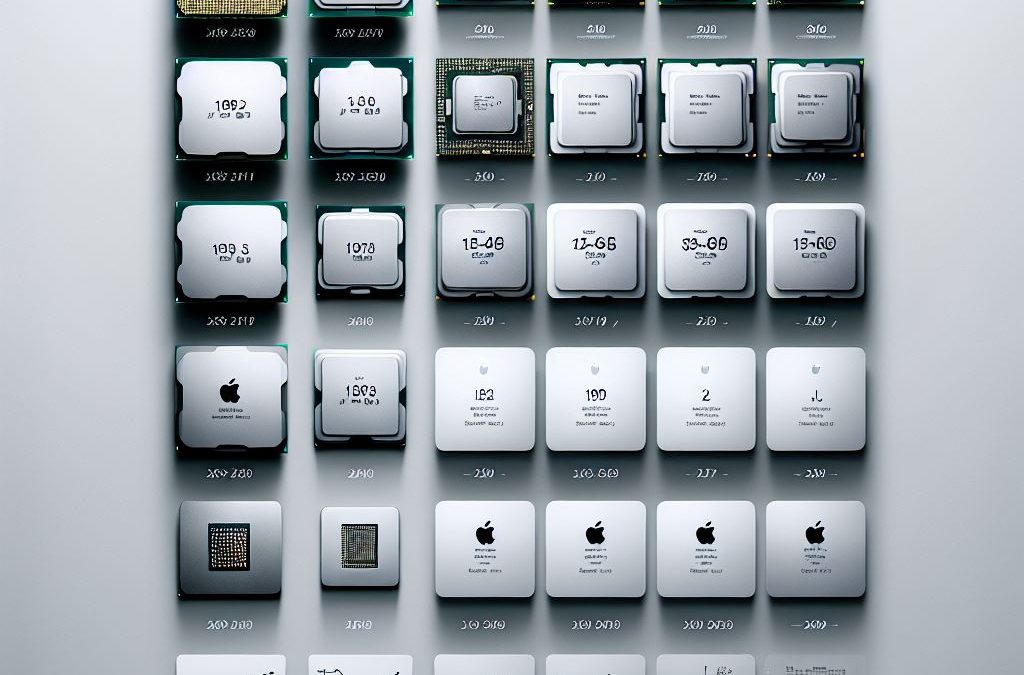Introduction
Apple’s journey in processor development has seen significant advancements, from Intel-based Macs to the revolutionary Apple Silicon. This article explores the evolution of Mac processors, comparing their performance, architecture, and impact on computing.
Intel Era (2006-2020)
Apple transitioned from PowerPC to Intel processors in 2006, marking a new era of performance and compatibility. Key processors included:
Intel Core Duo: Introduced in the first Intel-based Macs, offering improved performance over PowerPC.
Intel Core i5/i7: Enhanced multi-core performance, widely used in MacBook Pro and iMac models.
Intel Xeon: Utilized in Mac Pro for professional-grade performance.
Apple Silicon Era (2020-Present)
In 2020, Apple unveiled its own ARM-based processors, known as Apple Silicon, starting with the M1 chip. This shift brought significant improvements in efficiency and power.
M1 Series (2020)
M1: The first Apple Silicon chip, featuring 8 CPU cores and up to 8 GPU cores. Found in MacBook Air, MacBook Pro, and Mac mini.
M1 Pro: Enhanced version with up to 10 CPU cores and 16 GPU cores, used in higher-end MacBook Pro models
M1 Max: Further improvement with up to 10 CPU cores and 32 GPU cores, ideal for demanding tasks
M1 Ultra: Combines two M1 Max chips, offering up to 20 CPU cores and 64 GPU cores, used in Mac Studio
M2 Series (2022)
M2: Improved performance with up to 10 CPU cores and 10 GPU cores, found in updated MacBook Air and MacBook Pro
M2 Pro: Features up to 12 CPU cores and 20 GPU cores
M2 Max: Offers up to 12 CPU cores and 38 GPU cores
M2 Ultra: Combines two M2 Max chips, providing up to 24 CPU cores and 76 GPU cores
M3 Series (2023)
M3: Enhanced efficiency and performance with up to 8 CPU cores and 10 GPU cores
M3 Pro: Up to 12 CPU cores and 18 GPU cores
M3 Max: Up to 16 CPU cores and 40 GPU cores
.M4 Series (2024)
M4: Latest generation with up to 10 CPU cores and 10 GPU cores.
M4 Pro: Up to 14 CPU cores and 20 GPU cores
M4 Max: Up to 16 CPU cores and 40 GPU cores
Performance Comparison
Apple Silicon chips have consistently outperformed their Intel predecessors in both single-core and multi-core benchmarks.
The transition to ARM architecture has also brought significant improvements in energy efficiency and thermal management.
Apple’s shift from Intel to its own Silicon has revolutionized Mac performance, offering unparalleled efficiency and power. Each generation of Apple Silicon has built upon the last, providing users with increasingly powerful tools for both everyday use and professional applications. If you have an old Mac and want to upgrade then why not sell it to us today and get the best market price. Sell your Mac today
